Statements
A. The four nucleotide bases are not necessarily present in DNA in exact equal proportions.
B. The total amount of purines are equal to the toal amount of pyrimidines.
C. DNA ligase enzyme act to hydrolyse or breakdown a polynucleotide chain into its component nucleotides.
D. Nuclease enzymes are capable of restoring an intact DNA duplex.
Of the above statements
A,B and C are correct but D is wrong
B,C and D are correct but A is wrong
B is correct But A, C and D are wrong.
A and B are correct but C and D are wrong.
The correct Answer is:D
Step by step video, text & image solution for Statements : A. The four nucleotide bases are not necessarily present in DNA in exact equal proportions. B. The total amount of purines are equal to the toal amount of pyrimidines. C. DNA ligase enzyme act to hydrolyse or breakdown a polynucleotide chain into its component nucleotides. D. Nuclease enzymes are capable of restoring an intact DNA duplex. Of the above statements : by Biology experts to help you in doubts & scoring excellent marks in Class 12 exams.
Topper's Solved these Questions
- BOOK - GRB PUBLICATIONCHAPTER - THE GENETIC MATERIALEXERCISE - DNA REPLICATION136videos
THE GENETIC MATERIAL
- BOOK - GRB PUBLICATIONCHAPTER - THE GENETIC MATERIALEXERCISE - DNA REPLICATION136videos
THE GENETIC MATERIAL
- BOOK - GRB PUBLICATIONCHAPTER - SEXUAL REPRODUCTION IN FLOWERING PLANTSEXERCISE - NCERT Corner23videos
SEXUAL REPRODUCTION IN FLOWERING PLANTS
- BOOK - GRB PUBLICATIONCHAPTER - TRANSCRIPTION AND TRANSLATIONEXERCISE - TRANSLATION124videos
TRANSCRIPTION AND TRANSLATION
Similar Questions
The Chargoff's rule says that DNA contains equal amounts of guanine and cytosine and also equimolar amounts of adenine and thymine as :
G=CandA=T
(a) Does Chargoff's rule imply that equal amounts of guanine and adenine are present in DNA ?
(b) Does Chargoff's rule imply that the sum of purine residues equals the sum of pyrimidine residues i.e. does A+G=C+T?
(c) Does Chargoff's rule apply only to double stranded DNA or would it apply to each individual strand if the double helical strand were separated into two complementary strands ?View SolutionRead the passage given below and answer the question:
EVIDENCE FOR THE FIBROUS NATURE OF DNA
The basic chemical formula of DNA is now well established. As shown in Figure 1 it consists of a very long chain, the backbone of which is made up of alternate sugar and phosphate groups, joined together in regular 3' 5' phosphate di-ester linkages. To each sugar is attached a nitrogenous base, only four different kinds of which are commonly found in DNA. Two of these---adenine and guanine--- are purines, and the other two thymine and cytosine-are pyrimidines. A fifth base, 5-methyl cytosine, occurs in smaller amounts in certain organisms, and a sixth, 5-hydroxy-methyl-cytosine, is found instead of cytosine in the T even phages. It should be noted that the chain is unbranched, a consequence of the regular internucleotide linkage. On the other hand the sequence of the different nucleotides is, as far as can be ascertained, completely irregular. Thus, DNA has some features which are regular, and some which are irregular. A similar conception of the DNA molecule as a long thin fiber is obtained from physicochemical analysis involving sedimentation, diffusion, light scattering, and viscosity measurements. These techniques indicate that DNA is a very asymmetrical structure approximately 20 A wide and many thousands of angstroms long. Estimates of its molecular weight currently center between 5×106 and 107 (approximately 3×104 nucleotides). Surprisingly each of these measurements tend to suggest that the DNA is relatively rigid, a puzzling finding in view of the large number of single bonds (5 per nucleotide) in the phosphate-sugar back bone. Recently these indirect inferences have been confirmed by electron microscopy.
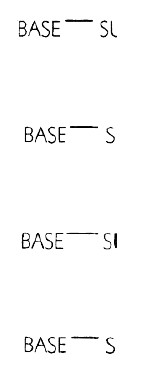
(source: Watson, J. D., & Crick, F.H. (1953, January). The structure of DNA. In Cold Spring Harbor symposia on quantitative biology (Vol. 18, pp. 123-131). Cold Spring Harbor Laboratory Press.)
Purines present in DNA are:View Solution
Knowledge Check
- Question 1 - Select One
Read the following five statements (A to E) about nucleic acids and select the option with all correct statements:
(A) DNA is a long polymer of deoxyribonucleotides.
(B) The two chains of DNA have anti-parallel polarity.
(C) The backbone in a polynucleotide chain is formed due to nitrogenous bases and phosphates.
(D) DNA acts as the genetic material in most of the organisms.
(E) Uracil is present in RNA at the place of cytosine.A(A), (D) and (E)B(B), (C) and (E)C(A), (C) and (D)D(A), (B) and (D) - Question 2 - Select One
Consider the following statements.
A. Endonucleases remove nucleotides from the ends of the DNA whereas, exonucleases make cuts a specific positions within the DNA.
Restriction enzymes cut the strand of DNA a little away from the centre of the palindrome sites.
C. Asexual reproductions provides opportunities for variations and formulation of unique combinations of genetic setup. ltbrtgt D. DNA fragments can be separated by a technique known as gel electrophoresis.
Of the above statements:AA and B are correctBB and D are correctCA and C are correctDA and C are correct - Question 3 - Select One
Purines (Adenine and Guanine) and Pyrimidines (Cytosine and Thymine) are present in DNA in an equal ratio. Also, Purines and Pyrimidines are complementary in a polynucleotide chain. It means that the number of Adenine molecules should be equal to the number of Thymine molecules and the number of Gunanine molecules should be equal to the number of Cytosine molecules.
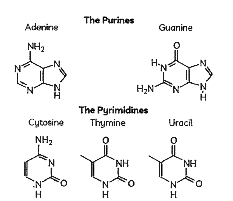
In a given strands of DNA, the base sequence is AGTCATGAT. What will be the basic sequence of its complementary strand.AAGTCATGCTBAGTCATGATCTCAGTACTADAGTGATGAT
Read the passage given below and answer the question:
EVIDENCE FOR THE FIBROUS NATURE OF DNA
The basic chemical formula of DNA is now well established. As shown in Figure 1 it consists of a very long chain, the backbone of which is made up of alternate sugar and phosphate groups, joined together in regular 3' 5' phosphate di-ester linkages. To each sugar is attached a nitrogenous base, only four different kinds of which are commonly found in DNA. Two of these---adenine and guanine--- are purines, and the other two thymine and cytosine-are pyrimidines. A fifth base, 5-methyl cytosine, occurs in smaller amounts in certain organisms, and a sixth, 5-hydroxy-methyl-cytosine, is found instead of cytosine in the T even phages. It should be noted that the chain is unbranched, a consequence of the regular internucleotide linkage. On the other hand the sequence of the different nucleotides is, as far as can be ascertained, completely irregular. Thus, DNA has some features which are regular, and some which are irregular. A similar conception of the DNA molecule as a long thin fiber is obtained from physicochemical analysis involving sedimentation, diffusion, light scattering, and viscosity measurements. These techniques indicate that DNA is a very asymmetrical structure approximately 20 A wide and many thousands of angstroms long. Estimates of its molecular weight currently center between 5×106 and 107 (approximately 3×104 nucleotides). Surprisingly each of these measurements tend to suggest that the DNA is relatively rigid, a puzzling finding in view of the large number of single bonds (5 per nucleotide) in the phosphate-sugar back bone. Recently these indirect inferences have been confirmed by electron microscopy.
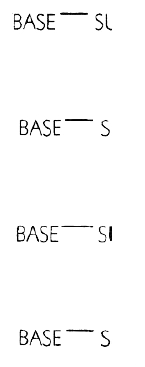
(source: Watson, J. D., & Crick, F.H. (1953, January). The structure of DNA. In Cold Spring Harbor symposia on quantitative biology (Vol. 18, pp. 123-131). Cold Spring Harbor Laboratory Press.)
DNA molecule has _______ internucleotide linkage and ______ sequence of the different nucleotidesView SolutionRead the passage given below and answer the question:
EVIDENCE FOR THE FIBROUS NATURE OF DNA
The basic chemical formula of DNA is now well established. As shown in Figure 1 it consists of a very long chain, the backbone of which is made up of alternate sugar and phosphate groups, joined together in regular 3' 5' phosphate di-ester linkages. To each sugar is attached a nitrogenous base, only four different kinds of which are commonly found in DNA. Two of these---adenine and guanine--- are purines, and the other two thymine and cytosine-are pyrimidines. A fifth base, 5-methyl cytosine, occurs in smaller amounts in certain organisms, and a sixth, 5-hydroxy-methyl-cytosine, is found instead of cytosine in the T even phages. It should be noted that the chain is unbranched, a consequence of the regular internucleotide linkage. On the other hand the sequence of the different nucleotides is, as far as can be ascertained, completely irregular. Thus, DNA has some features which are regular, and some which are irregular. A similar conception of the DNA molecule as a long thin fiber is obtained from physicochemical analysis involving sedimentation, diffusion, light scattering, and viscosity measurements. These techniques indicate that DNA is a very asymmetrical structure approximately 20 A wide and many thousands of angstroms long. Estimates of its molecular weight currently center between 5×106 and 107 (approximately 3×104 nucleotides). Surprisingly each of these measurements tend to suggest that the DNA is relatively rigid, a puzzling finding in view of the large number of single bonds (5 per nucleotide) in the phosphate-sugar back bone. Recently these indirect inferences have been confirmed by electron microscopy.
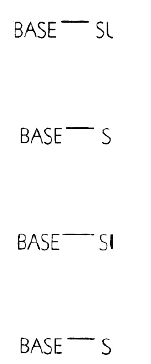
(source: Watson, J. D., & Crick, F.H. (1953, January). The structure of DNA. In Cold Spring Harbor symposia on quantitative biology (Vol. 18, pp. 123-131). Cold Spring Harbor Laboratory Press.)
Out of the four different kinds of nitrogenous bases which are commonly found in DNA, _______ has been replaced in some organisms.View SolutionRead the passage given below and answer the question:
EVIDENCE FOR THE FIBROUS NATURE OF DNA
The basic chemical formula of DNA is now well established. As shown in Figure 1 it consists of a very long chain, the backbone of which is made up of alternate sugar and phosphate groups, joined together in regular 3' 5' phosphate di-ester linkages. To each sugar is attached a nitrogenous base, only four different kinds of which are commonly found in DNA. Two of these---adenine and guanine--- are purines, and the other two thymine and cytosine-are pyrimidines. A fifth base, 5-methyl cytosine, occurs in smaller amounts in certain organisms, and a sixth, 5-hydroxy-methyl-cytosine, is found instead of cytosine in the T even phages. It should be noted that the chain is unbranched, a consequence of the regular internucleotide linkage. On the other hand the sequence of the different nucleotides is, as far as can be ascertained, completely irregular. Thus, DNA has some features which are regular, and some which are irregular. A similar conception of the DNA molecule as a long thin fiber is obtained from physicochemical analysis involving sedimentation, diffusion, light scattering, and viscosity measurements. These techniques indicate that DNA is a very asymmetrical structure approximately 20 A wide and many thousands of angstroms long. Estimates of its molecular weight currently center between 5×106 and 107 (approximately 3×104 nucleotides). Surprisingly each of these measurements tend to suggest that the DNA is relatively rigid, a puzzling finding in view of the large number of single bonds (5 per nucleotide) in the phosphate-sugar back bone. Recently these indirect inferences have been confirmed by electron microscopy.
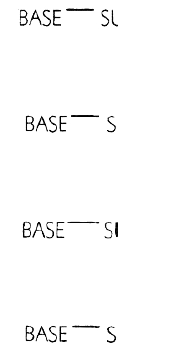
(source: Watson, J. D., & Crick, F.H. (1953, January). The structure of DNA. In Cold Spring Harbor symposia on quantitative biology (Vol. 18, pp. 123-131). Cold Spring Harbor Laboratory Press.)
DNA has a _______ backboneView SolutionIdentify the true statements:
A. The first recombinant DNA was constructed by using a piece of DNA from a plasmid carrying antibiotic resistance gene in the bacterium Salmonella typhimuriu and linked it to the plasmid to E. coil.
B. Cohen and Boyer are known as father of genetic enginnering.
C. When cut by the same restriction enzyme, the resultant DNA fragments have the same kind of sticky ends and these can be joined together using DNA ligases.
D. Endonucleases remove nucleotides from the ends of the DNA whereas exonuclease make cuts at specific positions within the DNA.
E. Presence of more than one recoginition sites with the vector will generate several fragments, which will complicate the gene cloning
F. Humulin was the first recombinant DNA based product, produced and marketed in India.
G.YAC vectors contain the telomeric sequence, the centromene and autonomously replicating sequence from yeast chromosomes.
H. Alkaline phosphatase, is used to prevent unwanted salf ligation of the vector DNA molecules in procedures of r DNA technology.
I. pBR322 vector was the first artificial ideal vector constructed by Boliver and Rodriguer.
J. Plasmid DNA is coated wiht histone proteins and can act as genetic factor.View SolutionRead the following statements and find out the incorrect statements.
a. The length of DNA is usually defined as number of nucleotides or base pairs present in it.
b. In DNA, every nucleotide residue has an additional −OH group present at 2'-position in the deoxyribose.
c. Nuclein was discovered and named by Friedrich Meisher in 1969.
d. Adenine pair with Thymine and Guanine with Cytosine through H-bonds. This makes one strand complementary to the other.
e. the proposition of double helical model of DNA was also based on the observation of Erwin Chargaff.View Solution

